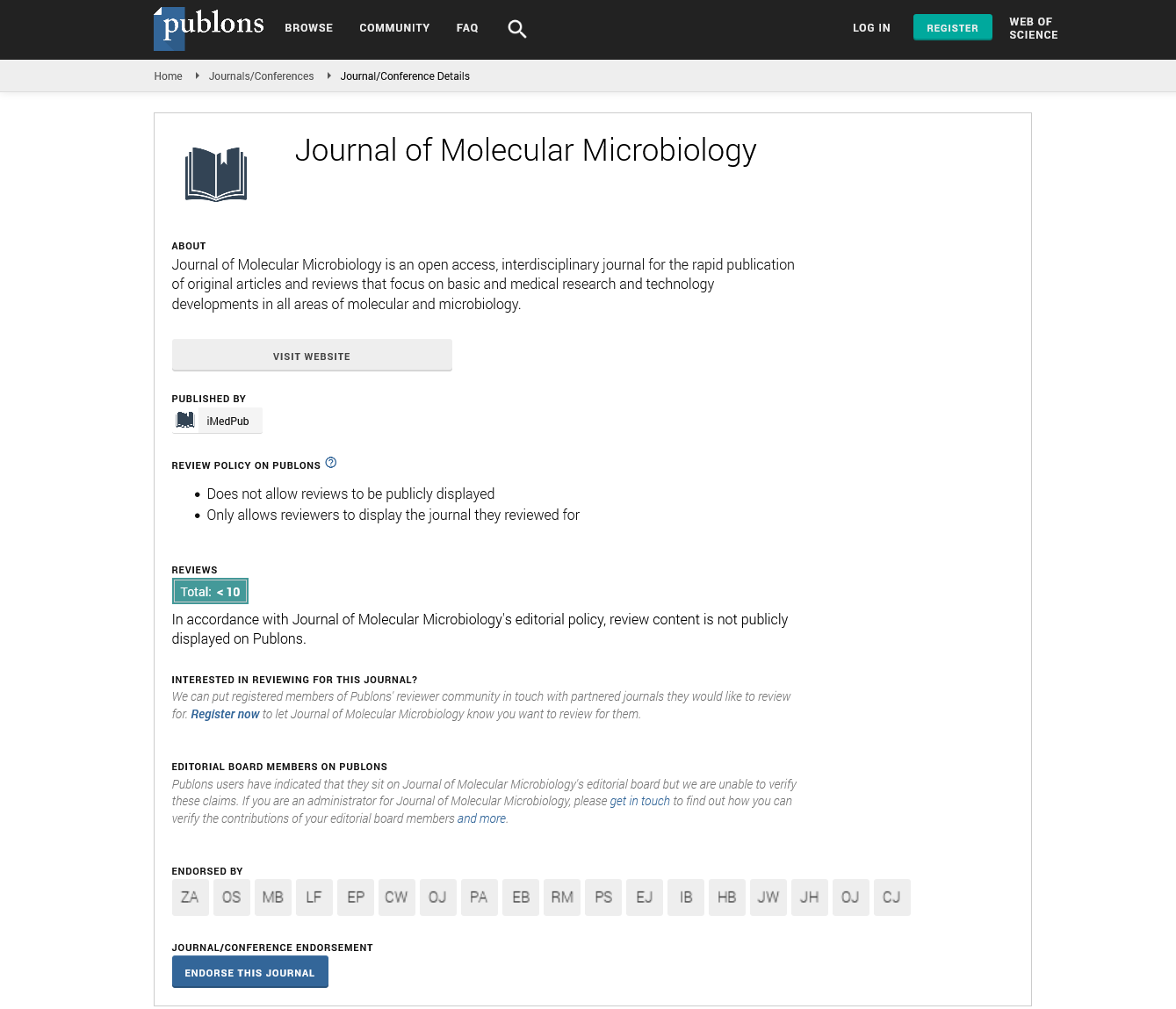Abstract
In silico B-cell and T-cell epitope-based vaccine designing against chikungunya virus
Objective
Chikungunya virus (CHIKV) is an arthropod-borne alphavirus, belonging to the Togavirus family. There is no commercial treatment or vaccine against CHIKV, despite the acute epidemics taking place in several events distributed among wide areas. The aim of this study was to employ various computational methods to identify B-cell and T-cell epitopes from the envelope protein E1, which have the potential for vaccine development against CHIKV
Methods:
Forty-seven sequences of the E1 glycoprotein of Chikungunya virus strains were retrieved from the NCBI database. EBLClustal Omega Multiple sequence alignment tool, Protein variability Server, Vaxijen v2.0 server, Kolaskar and Tongaonkar method, BepiPred2.0 and ABCpred servers were used to determine sequence conservancy, variability, antigenicity and B-cell epitope prediction respectively. Emini surface accessibility prediction tool, IEDB conservancy analysis tool, Karplus and Schulz flexibility prediction analysis and IEDB Parker hydrophilicity analysis tools were used to identify accessibility, conservancy, flexibility and hydrophilicity of the predicted B-cell epitope. T cell epitopes were identified by NetCTL server. MHC-I and MHC-II prediction servers of IEDB, AllerTOP v. 2.0, ToxinPred, IEDB population coverage analysis tool servers were used to predict the interacting MHC alleles with the predicted T-cell epitopes, the allergenicity, toxicity and world population coverage of the predicted T-cell epitopes respectively. PEPFOLD Peptide Structure Prediction server and SWISS-MODEL server were used to predict the 3D structures of the predicted T-cell epitopes and the MHC-I allele, HLA-C 12*03, respectively which bound to the majority of the of the predicted T cell epitopes. The models were validated by ProSA and PROCHECK tools. Docking assay of the predicted T-cell epitopes was performed with HLA-C 12*03 allele through AutoDock Vina in PyRx. The validation of workflow for determination of both the T-cell and B-cell epitopes was conducted through comparison with wet lab studies.
Results:
77 amino acids of the E1 glycoprotein were conserved among all the sequences which comprise more than 90% of the length of the E1 protein. Vaxijen server identified it as a probable antigen with a value of 0.4949. Kolaskar and Tongaonkar prediction revealed most of the amino acids of the protein were above the threshold value. Five B-cell epitopes were identified to be common in BepiPred and ABCpred. Two peptides were predicted to have surface accessibility and Four B-cell epitopes among the predicted five were found to have consensus sequences with the two predicted surface accessible peptides meaning that they overlap with the Emini predicted peptides as they reside in the same region of the protein E1. Four of these epitopes were also found to have high conservancy among the sequences. Among the chosen four, two B-cell epitopes NTQLSEAHVEKS and DAENTQLS were found to be highly antigenic and between those two, NTQLSEAHVEKS proved to possess flexibility and hydrophilicity as most of the residues of the peptide were found above the threshold level. 10 highly conserved T-cell epitopes were identified by NetCTL prediction method out of which we narrowed them down to 7 T-cell epitopes with their interacting MHC I and II alleles. Four T-cell epitopes were selected as non-allergens and non-cytotoxic out of the seven T-cell epitopes. SASAKLRVL and KTEFASAYR were selected with the highest world population coverages. The 3D structures of the chosen two T-cell epitopes and their interacting MHC-I allele, HLA-C 12*03, were determined and validated. Through docking simulation assay it was found that T cell epitope SASAKLRVL bound with the HLA-C 12*03 allele with a binding energy of -14.1kcal/mol higher than that of KTEFASAYR.
Conclusion:
Here we suggest in vivo study of our novel peptide antigens in E1 for B-cell and T-cell epitope-based vaccines which may be used to prevent Chikungunya virus.
Author(s): Sheikh Anushe1 and Shamira Tabrejee1,2
Abstract | PDF
Share This Article
Google Scholar citation report
Citations : 86
Journal of Molecular Microbiology received 86 citations as per Google Scholar report
Journal of Molecular Microbiology peer review process verified at publons
Abstracted/Indexed in
- Google Scholar
- Publons
Open Access Journals
- Aquaculture & Veterinary Science
- Chemistry & Chemical Sciences
- Clinical Sciences
- Engineering
- General Science
- Genetics & Molecular Biology
- Health Care & Nursing
- Immunology & Microbiology
- Materials Science
- Mathematics & Physics
- Medical Sciences
- Neurology & Psychiatry
- Oncology & Cancer Science
- Pharmaceutical Sciences
